Are you searching for vegetables that start with the letter G? Then you have come to the right place. This article is exactly what you need.
G is the seventh letter of the alphabet. Here, in this article, I have comprised an ample list of vegetables starting with the letter G for you.
Whatever your need is, for cooking, research, school assignment, general knowledge, or writing about a cookbook, you can find all the information about vegetables that start with the letter G below.
Also, let me remind you that, here I have considered vegetables of all forms like root vegetables, green leafy vegetables, flowering plants, edible fruit plants, sea vegetables, etc.
So, without losing any more time, let’s get started with the extensive list of vegetables that start with the letter G.
Vegetables That Start With G
The vegetables mentioned below have been compiled from various sources around the web, such as Wikipedia, Quora, Pinterest, etc. Following are the vegetables that begin with the letter G:
1. Garbanzo Beans
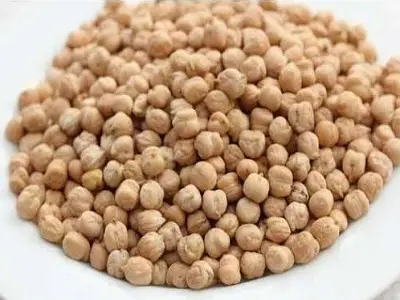
Garbanzo beans is an annual legume vegetable that starts with the letter G. In the scientific world, it is known as Cicer Arietinum and belongs to the Fabaceae family. This plant is cultivated worldwide for its protein and fiber-enriched seeds.
It is enriched with various healthy vitamins and minerals such as necessary protein, carbs, fiber, vitamin C, potassium, magnesium, iron, etc. It has a nutty undertone taste and often seems earthy. It also tastes like a bean and can be eaten both raw and cooked.
Garbanzo Beans have many health benefits such as it helps in reducing the risk of cancer, controlling blood sugar, helping with digestion, improving bone strength, reducing cholesterol, and boosting mental health.
2. Garlic

Garlic is a common G letter vegetable that is cultivated worldwide. It is a flowering plant with a bulbous body. In the botanical language, it is called Allium sativum and it belongs to the family of Amaryllidaceae. Its close relative vegetables are shallot, onion, chive, leek, etc.
Garlic is packed with important nutrients like vitamins A, C, and K, necessary dietary fiber, folate, minerals potassium, magnesium, calcium, and energy. This vegetable has low calories and high amounts of antioxidants. It has a milder taste, but when sliced thinly, it becomes better.
Garlic has many health benefits such as it helps with the functions of muscle control, reduces the risk of cancer, improves memory, mood, etc. It is also very good for bone health, eye health, gut health, and other medical conditions.
3. Galangal
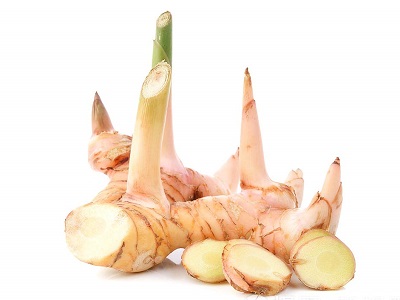
Galangal is a root vegetable that is native to Southern Asia. It is called Alpinia galangal scientifically and belongs to the Zingiberaceae family. The roots of this vegetable are used as spices and also the roots have been used as medicine for centuries.
This vegetable looks and tastes a lot like ginger. It contains various nutrients that make it a very important vegetable. It has dietary fiber, carbohydrates, protein, vitamin A, C, minerals sodium, iron, calcium, etc. Also it has emodin, galangin, etc.
Galangal has many health benefits such as it treats many kinds of infections, reduces inflammations, fights against many types of cancers, boosts male fertility, fights against the free radicals, protects skin and cells, etc.
4. Garden Rocket
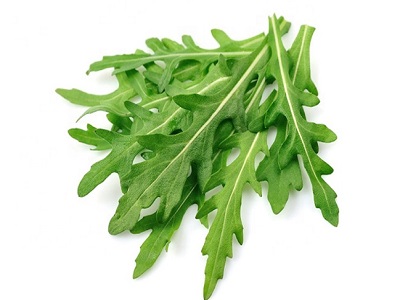
Garden rocket or Arugula is an annual leaf vegetable. It is an edible plant with a fresh, bitter, and peppery flavor. It is known in the botanical world as Eruca vesicaria and belongs to the family of Brassicaceae. It is also known as rugula, rucola, colewort, ruchetta, etc.
This G letter vegetable is enriched with several nutrients that contain vitamins and minerals such as protein, fat, carbs, vitamins C, K, provitamin A, folate, minerals potassium, magnesium, iron, calcium, etc. This vegetable can be eaten raw in salads or cooked.
Garden rocket has many health benefits such as its high antioxidants fights against the free radicals and keep the cells healthy, reduces the risks of many types of cancers, maintains a healthy blood sugar level, and controls diabetes, improves heart health, etc.
5. Gem Squash

Gem squash is a summer squash that is native to Central and Southern USA and Mexico. It is called Cucurbita pepo scientifically and belongs to the Cucurbitaceae family. This vegetable can be eaten at any stage of its growth.
It is enriched with many important nutrients such as vitamins A, C, K, riboflavin, folate, thiamin, niacin, potassium, calcium, magnesium, manganese, proteins, dietary fibers, high amount of antioxidants, low cholesterol, etc.
Gem squash has many health benefits such as it controls the calorie intake of the body, fights against the free radicals and protects the skin, maintains a healthy weight by promoting weight loss, maintains a healthy blood sugar level, reduce inflammation, etc.
6. Garlic Chive

Garlic chive is another vegetable that starts with letter G. It is native to the Chinese province of Shanxi. It is called Allium tuberosum scientifically and belongs to the family of Amaryllidaceae.
The main difference between a chive and a garlic chive is in the shape of the leaves. Regular chives have tubular leaves, wherein garlic chives have flatter leaves.
It is packed with numerous vitamins and minerals that make it a healthy vegetable such as proteins, necessary dietary fibers, carbohydrates, antioxidants, vitamin A, B2, C, minerals calcium, potassium, manganese, iron, zinc, etc.
Garlic chive has many health benefits also such as it prevents against common fever and cold, fights against free radicals and keeps the cells healthy, increases blood count, maintains healthy blood pressure, boosts the immune system, etc.
7. Gherkin
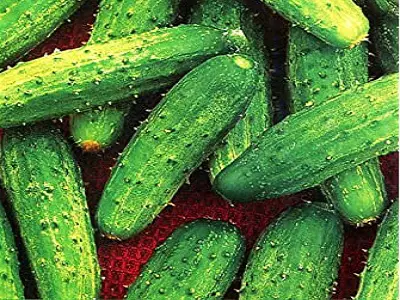
Gherkin is basically a cucumber that has been pickled and is known as a pickled cucumber. It is pickled in brine, vinegar, or some other solutions and left for a certain period of time to ferment. It is known in the scientific world as Cucumis anguria and belongs to the family of Cucurbitaceae.
This G letter vegetable has many rich nutrients that contain various vitamins and minerals such as proteins, dietary fibers, carbs, water, vitamins A, C, K, minerals calcium, potassium, sodium, iron, magnesium, etc. The fermentation process of this vegetable gives it a sour and salty taste.
Gherkin has many health benefits such as it helps improve the digestive system, fights against many kinds of heart diseases, eases muscle cramps, improves teeth health, helps in blood clots, boosts the immune system, improves eye health, etc.
8. Ginger

Ginger is a flowering plant that is cultivated all around the world. Basically, its rhizome or root is used as spice or folk medicine. It is called Zingiber officinale in the botanical world and belongs to the Zingiberaceae family. This vegetable originated in Southeast Asia.
Ginger is enriched with many healthy nutrients that make it a great and healthy vegetable such as vitamins C, B6, folate, minerals sodium, calcium, potassium, magnesium, iron, proteins, carbs, fibers, etc.
This G letter vegetable has many health benefits such as it helps with common cold and flu, treats many types of nausea and morning sickness, promotes weight loss, prevents osteoarthritis, improves heart health by maintaining a healthy blood sugar level, improves digestion, etc.
9. Good King Henry
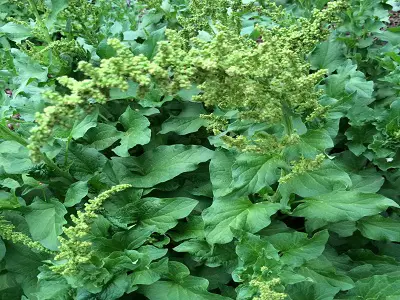
Good King Henry is a perennial goosefoot vegetable that is native to central and southern Europe. In botanical language, it is called Chenopodium bonus-henricus and belongs to the family of Amaranthaceae. It is also known as Blitum bonus-henricus, marker, etc.
This G letter vegetable is packed with various nutrients consisting of vitamins and minerals such as proteins, carbs, necessary fibers, vitamins A, B1, B2, C, folate, niacin, minerals fatty acid, copper, iron, calcium, magnesium, phosphorus, etc.
Good King Henry has many health benefits such as it keeps the heart healthy, improves teeth health, helps in constipation and acidity, cures skin diseases, helps in anemia, beneficial in kidney stones, prevents jaundice, etc.
10. Green Beans
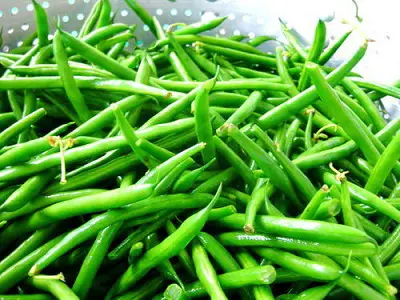
Green beans is an herbaceous annual vegetable that starts with letter G. It is cultivated all around the world for its seeds and immature pods. In scientific language, it is called Phaseolus vulgaris and belongs to the Fabaceae family. It is also known as common bean, French bean, string bean, snap bean, etc.
It is enriched with multiple vitamins and minerals that make this vegetable very healthy to eat such as vitamins A, C, K, fiber, folic acid, minerals potassium, magnesium, calcium, etc. It can be eaten toasted, boiled, fried, or cooked.
Green beans has various health benefits such as it improves heart health, maintains and repairs the body from any injury or pain, maintains a healthy blood sugar level and thus prevents diabetes, reduce the risks of many types of cancers, etc.
11. Golden Samphire
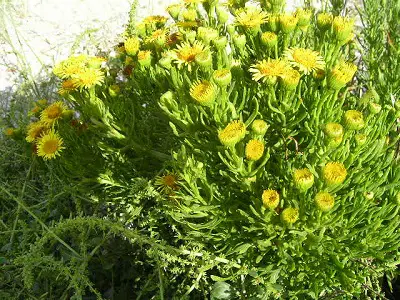
Golden Samphire is a perennial G letter vegetable. It can be seen growing on the coastal areas, sea cliffs, or salt marsh. It is native to southern and western Europe and the Mediterranean. In botanical language, it is called Limbarda crithmoides and belongs to the Asteraceae family.
It contains many nutrients filled with various vitamins and minerals such as necessary dietary fiber, carbohydrates, protein, low calories, vitamins A, B, C, minerals sodium, potassium, calcium, magnesium, antioxidants, etc.
This nutritious vegetable Golden Samphire is very good for human health. Some of its health benefits are; it improves the digestive system and aids in digestion, boosts the immune system, improves bone health, regulates sleep, fights against the free radicals, promotes weight loss, reduces inflammation, etc.
12. Gongura

Gongura is a form of the plant roselle vegetable, is native to India and Fiji. It is cultivated for its leaves. In the scientific world, it is called Hibiscus sabdariffa and belongs to the Hibiscus plant family. It has two varieties such as; res stemmed and green stemmed leaf. In South Indian cuisines, its leaves are used to add a tart flavor.
It has many rich vitamins and minerals such as dietary fibers, proteins, carbohydrates, low calories, antioxidants, vitamins A, C, thiamin, riboflavin, folic acid, minerals iron, sodium, potassium, calcium, magnesium, etc.
This G letter vegetable is full of nutrients that make it a very healthy vegetable. Its health benefits are; it protects the liver and increases blood quality and quantity, improves hair health and gives it volume, prevents hypertension, reduces the flow of breast milk, prevents many types of cancers, etc.
13. Grape Leaves
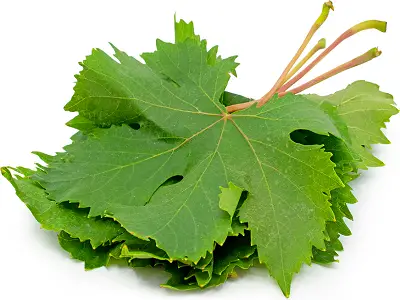
Grape leaves are the leaves from the grape vine plant. Its leaves are used in various cuisines of different cultures. It is native to the Mediterranean and the Middle East. It is called Vitis vinifera scientifically and belongs to the family of Vitaceae. The grape leaves are collected fresh, or is preserved in a jar or can.
It is enriched with various important healthy nutrients such as vitamins A, C, E, necessary fibers, proteins, minerals iron, magnesium, sodium, calcium, etc. It can be eaten raw in salads or cooked, and it has a tangy taste.
Grape leaves has many health benefits such as it promotes healthy blood circulation, maintains proper and healthy functions of heart, kidneys, and lungs, heals wounds and repairs body tissues, fights against the free radicals, prevents diabetes, improves bone health and memory health, etc.
14. Green Onion
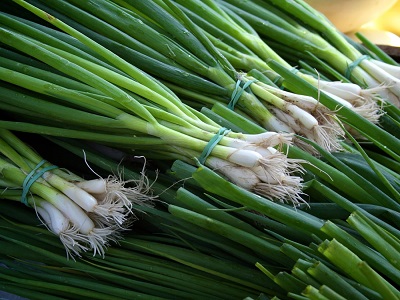
Green onion is one of the most cultivated vegetables in the world starting with letter G. In botanical language, it is known as Allium fistulosum. It is also called Scallions, spring onion, etc. The main difference between a green onion and other forms of onion is green onion does not have a bulb like others.
It is packed with various important nutrients that make it a very healthy vegetable such as dietary fiber, protein, vitamins A, C, K, folate, minerals potassium, calcium, energy, etc. Also, it has a high amount of antioxidants and is low in calories.
Green onion has many health benefits such as it reduces the risks of many types of cancers, helps with muscle functions, memory functions, improves mood, eye health, bone health, and other medical situations, etc.
15. Guar
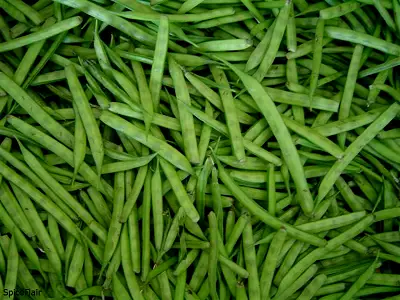
Guar is an annual legume vegetable that begins with G and is found in the wild. In the scientific world, it is known as Cyamopsis tetragonoloba and belongs to the family of Fabaceae. It is also called cluster bean, gavar, gawar, etc.
It has many rich nutrients consisting of multiple vitamins and minerals such as protein, dietary fiber, carbohydrate, vitamins A, C, k, minerals iron, calcium, phosphorus, etc. It is the main source of guar gum that is very beneficial to human health.
Guar has many health benefits such as it resolves the problem of anemia, maintains a healthy blood sugar level and controls diabetes, reduces cholesterol, improves heart health, promotes bone health, manages blood pressure, etc.
Frequently Asked Questions About Vegetables Beginning With G
Following are some frequently asked questions people asked randomly about Vegetables starting with G:
What Are Some 6 Letter Vegetables That Start With Letter G?
- Garlic
- Ginger
What Are Some 7 Letter Vegetables That Start With Letter G?
- Gherkin
- Gongura
What Are Some 10 Letter Vegetables That Start With Letter G?
- Green Beans
- Green Onion
What Are Some 11 Letter Vegetables That Start With Letter G?
- Garlic Chive
- Grape Leaves
What Are Some 13 Letter Vegetables That Start With Letter G?
- Garbanzo Beans
- Good King Henry
Conclusion
I hope you liked the article and educated yourself about some known and unknown vegetables starting with the letter G.
There are numerous vegetables that begin with G in the world, and it is not possible to make a list of each and every one of them.
So, if there are any vegetables missing from this list that start with G, please feel free to let me know in the comment section below. I will update the list as soon as possible.
Also, I recommend you read other articles that I have comprised for you with other letters. Such as:
- Vegetables That Start With E
- Vegetables That Start With F
- Vegetables That Start With H
- Vegetables That Start With I
- Vegetables That Start With J

